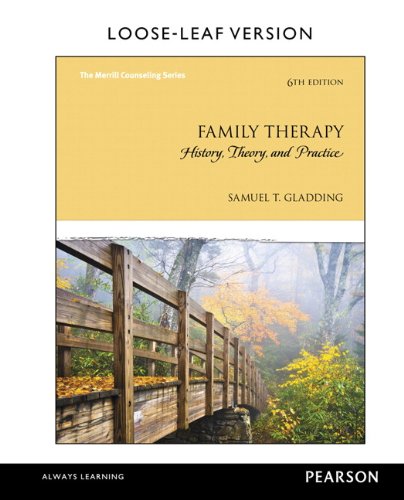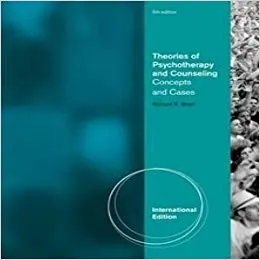Description
Family Therapy History, Theory, and Practice 6th Edition Gladding – Test Bank
Contents
Prologue Rationale For Family Therapy 1
Chapter 1 The History of Family Therapy: Evolution and Revolution 2
Chapter 2 The Theoretical Context of Family Therapy 10
Chapter 3 Types and Functionality of Families 17
Chapter 4 Working with Single-Parent and Blended Families 24
Chapter 5 Working with Culturally Diverse Families 36
Chapter 6 Ethical, Legal, and Professional Issues in Family Therapy 49
Chapter 7 The Process of Family Therapy 63
Chapter 8 Couple and Marriage Therapy and Enrichment 74
Chapter 9 Transgenerational Theories: Psychodynamic Family Theory and Bowen Family Systems Theory 86
Chapter 10 Experiential Family Therapy 94
Chapter 11 Behavioral and Cognitive-Behavioral Family Therapies 102
Chapter 12 Structural Family Therapy 111
Chapter 13 Strategic Family Therapies 118
Chapter 14 Solution-Focused Brief Therapy and Narrative Family Therapy 126
Chapter 15 Working with Substance-Related Disorders, Domestic Violence, and Child Abuse 134
Chapter 16 Research and Assessment in Family Therapy 144
Answer Key 152
Prologue
- Approximately 19% of the U.S. population is seen by marriage and family therapists each year at a cost of more than $300 million
- Despite these statistics, marriage and family therapy is relatively new with its theoretical and clinical beginnings starting in the 1940s and its real growth occurring from the 1970s until today
- Family therapy differs from individual and group counseling in its emphasis and clientele
- Individual counseling is more intrapersonal
- Group counseling is more interpersonal
- Family therapy for the most part focuses on making changes in the family system
- Family therapy is connected to the influence of creative, innovative, and assertive mental health practitioners who devised and advocated new ways of providing services to clients
The Rationale for Family Therapy
- Family therapists believe that most life difficulties stem from and can best be addressed within the family system
- Family therapy is an effective treatment approach, particularly in cases of:
- adolescent anorexia nervosa
- adolescent drug abuse
- adult alcoholism and drug abuse
- adult hypertension
- adult obesity
- adult schizophrenia
- aggression and noncompliance in children with ADD and ADHD
- childhood and adolescent anxiety disorders
- childhood autism
- childhood conduct disorders
- chronic physical illness in adults and children
- couple distress and conflict
- dementia
- depression in women in distressed marriages
- Client satisfaction is high, with 97% satisfaction rates and high percentages of clients stating they received the help they wanted from marriage and family therapists
Reasons for Working with Families as Opposed to Working with Individuals
- Provides flexibility in conceptualizing cases from both linear and circular causality perspectives
- Provides for increased complexity and treatment options for clients
- Involves other real, significant people in the treatment process and brings the action into the room
- All family members receive treatment interventions simultaneously
- Family therapy tends to be briefer than individual counseling
- Family therapy focuses on the interpersonal rather than the intrapersonal which creates new and unique ways of resolving problems





Be the first to review “Family Therapy History, Theory, and Practice 6th Edition Gladding – Test Bank”